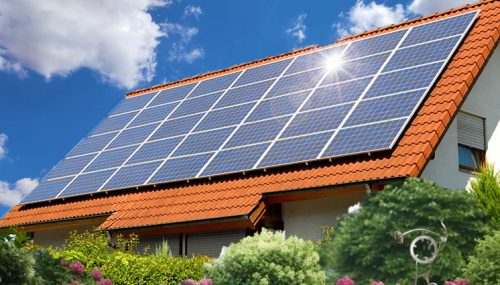Before you invest in solar panels for your home, it’s crucial to understand how much they’ll cost you and what kind of benefits you’ll get in return. You can also take advantage of government incentives and tax breaks to make solar power more affordable. After installing solar panels on your home, you’ll save money on your electricity bill each month for the next nine to twelve years.
Costs Of Solar Panel Installation
Considering installing solar panels for your home, you must first figure out how much the project will cost. Experts in New Jersey solar panel installation mentioned that the total cost would include labor and materials. This cost may vary based on the type of solar panel, size, and the job’s difficulty. For example, a high-pitched roof may require additional safety equipment and a more complicated installation process, increasing the overall cost. To estimate the solar panel installation costs, you can contact a local service provider and ask for a quote.
You may consult your local authority to determine whether you need planning permission before installing solar panels. This may be necessary if your property is in a conservation area or an area with building restrictions. It’s also important to check with your home insurance provider. Some providers will adjust your premium to reflect the additional cost of installing solar panels. Make sure to get multiple quotes to make sure you are getting the best deal.
Tax Incentives
If you want to save money on solar panel installation, consider tax incentives for solar panel installation. These incentives typically cover 20 to 30 percent of the total solar panel cost. In New York, for example, you may receive a tax credit for leasing the panels. The state also offers a subsidized loan program. However, there are specific requirements. These incentives must be used on a new solar panel installation, and the homeowner must be the first to use the system. The federal tax credit is only available for new solar equipment installations, and a house with a solar panel system cannot take advantage of it. It is also essential to understand that solar tax credits are only available for a limited period.
Location
When installing solar panels, you must consider where to install them. This is because the location is crucial for getting sunlight directly to the solar cells. Places that receive high rainfall or extreme weather may not be ideal for solar panel installation—choosing a location where the sun shines throughout the day is best. The most optimal location for solar panels is south-facing. This is because south-facing roofs receive more sunlight, which increases the amount of electricity they can generate. However, during winter, the number of daylight hours is significantly reduced, so the angle of solar panels should be set accordingly.
Savings On Electricity Bill
Solar panel installation can help you save money on your electricity bill. The amount you can save will depend on the electricity you use. There are several different programs that you can choose from, including time-of-use and net metering. These programs allow you to sell excess electricity to the grid at lower rates. Some programs also offer incentives for using solar energy during off-peak hours. Solar power costs include the panels themselves and the labor and parts needed to install them. Then, you have to maintain the panels. This can be expensive, but working with a professional installer will help reduce the risk of problems.
Maintenance Costs
Solar panel maintenance costs are primarily influenced by the sunlight a home or business receives. The basic tasks include cleaning and monitoring the solar panels, which should be done at least six to ten times a year. Ideally, the solar panel installer should visit your property at least twice a year to perform the maintenance. If your solar panels break or develop a fault, you must replace them. You don’t have to replace the entire system, but it can cost a few hundred dollars or more.

